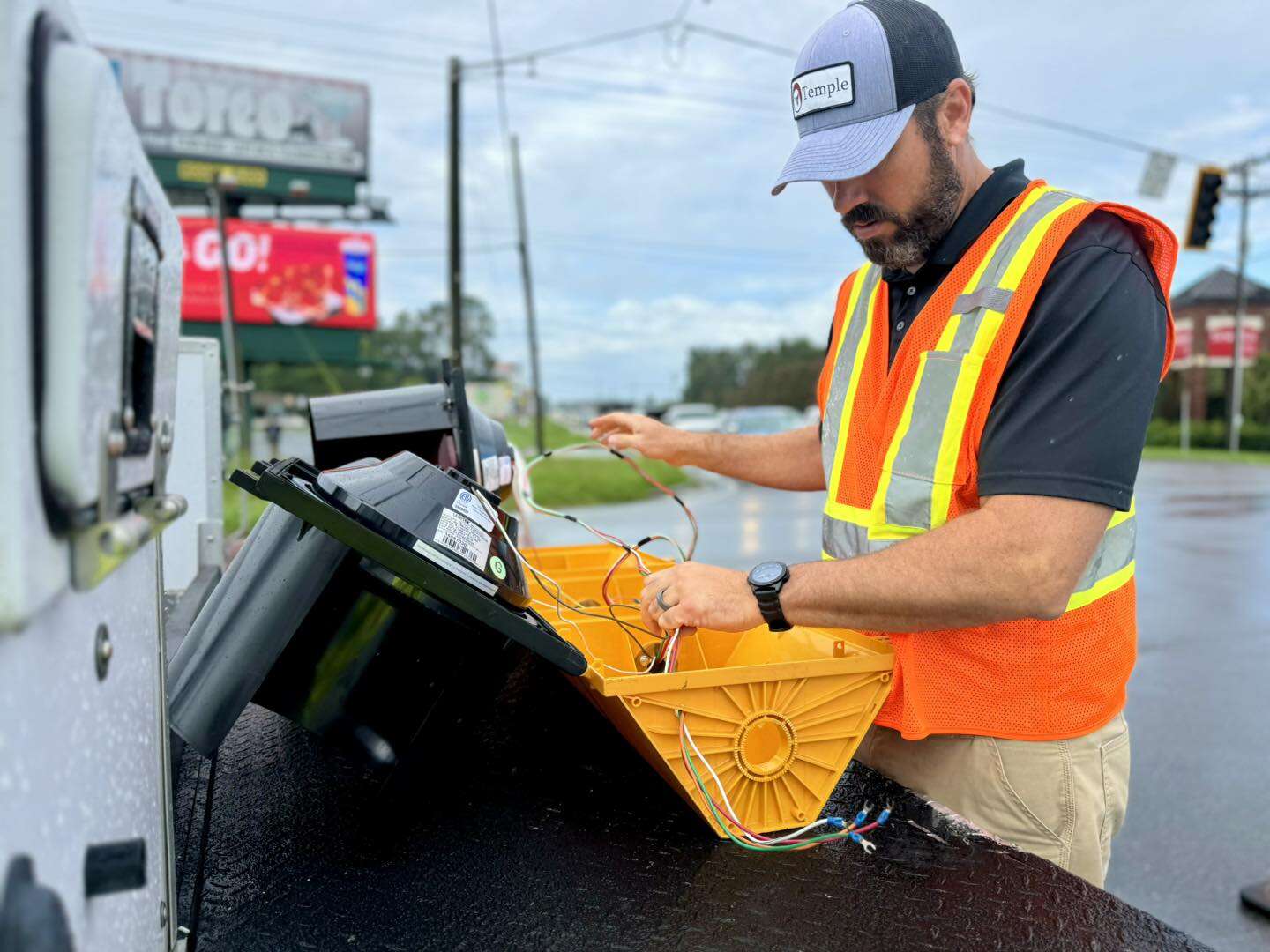‘County’s Worst Tragedy,’ 60 years later
Published 8:00 am Sunday, March 3, 2019

- The bus fell on its right side into the water from the Lower Brookfield Road, which was in the process of being paved in 1959.
TIFTON, Ga. — Robert Knight still feels uneasy, when riding on buses.
“I don’t like riding in buses now,” he said in a recent interview. “It’s like when they make a turn or lean or something and I just don’t like riding on buses.”
There is good reason for his uneasiness. Knight nearly drowned in an accident near Brookfield in 1959. His sister nearly drowned, too.
Nine children died in the accident, which happened when a school bus tipped into a pond.
The deceased were Gloria Jean Davis, Rufus Harold Green, Bernice Henderson, Henry Edward Johnson, Bobby King, Artie Lee Simmons, brothers Billy Tabor and Leroy Tabor Jr., and Erlene Wilcox.
They ranged in age from 7 years old to 14.
The Tifton Gazette declared it the “County’s Worst Tragedy” in its initial article. That is hard to argue. There have been wars and wrecks, illnesses and incidents.
None have been so deadly and so cruel as to take nine lives at once in Tift County, lives of innocent children en route to school.
No one is quite sure how many children were riding the school bus bound for then-segregated Tift County Industrial and Wilson High and Elementary on the morning of March 3, 1959.
Bus driver Doyer Jones was quoted as estimating between 80-100 children in an Atlanta Journal special report. Tift County school superintendent Henry Banks Allen said Jones told him 60 children. The Tifton Gazette stated it was 86 in its March 4 article. Two days later, The Gazette said two other drivers arrived at a figure of 69. Counts were done when the children arrived at school, not when boarding.
Jones, Allen and riders did agree on one thing: The bus was overcrowded.
Overcrowding did not cause the bus to wreck. It was, however, the part of the story that drew the most reaction statewide.
The accident was ruled blameless. Jones hit a bump and lost control of the bus, which careened into several feet of pond water on Ike Jackson’s property on Lower Brookfield Road.
“It was really sad to have so many lives lost,” said James Alfred Denson, who was a passenger on the bus. “My brothers, March 3rd, we always talk about it.”
“Emotionally, I try to forget about it.”
Louise Moore said she lost close friends in the accident. Her family was close to Johnson’s. She also remembered Wilcox’s family.
“He was one of our good friends,” said Moore of Henry Johnson. “We used to play after church every Sunday. A real funny and friendly guy.”
Joan Howard said Henderson was standing near her on the bus.
“I knew her well,” said Howard. “She was a good student. A quiet girl.”
Howard also knew the older victims, the Tabors and Simmons.
Grady King Jr.’s brother, Bobby, was another victim. Ten-year-old Bobby was the youngest of the King siblings.
“I miss him today,” said Grady Jr. “It’s been a long time ago, but I still miss him.”
CHANGING TIMES
Lower Brookfield Road was different in 1959 than it is today.
Unpaved in 1959, it was in the process of being paved. Oscar Holt, a passenger on the bus, recalled workers were in the process of putting blacktop on the road. Robert Knight, who was also on board, remembered the road had been built up for that process.
It was not the only thing different.
Tift County schools were segregated in 1959 — as were all other public schools in Georgia — not integrating until the fall of 1965.
County-founded buses for black students were in place as late as 1949. At that time, there were four buses funded that way (and possibly others funded privately). At the time of the accident, Tift County paid for several black school buses that were making nine trips each morning, transporting 765 students. Just under 2,500 white students were being transported on 20 buses.
The buses were a necessity for students.
There were three black schools in Tift County in 1958-59, one at Ty Ty and two in Tifton. The children on Jones’ bus were headed to Tift County Industrial (now called J.T. Reddick) and Wilson High and Elementary. Industrial, affected by a fire in June 1948, was a patchwork of new and old buildings. Wilson opened in 1957 to relieve overcrowding at Industrial.
Brookfield, which is near where most of the children on the bus lived, had once had a school. It existed until either 1945 or 1946, one of 11 black schools in the county. By the early 1950s, there were schools at Industrial, Ty Ty, Omega and Chula. The latter two seem to have closed in 1957.
None of the Brookfield children on the bus would have gone to the old school. Despite the progress in their schools, the world was still small in 1959. Few had televisions. Athletic teams traveled at Wilson High, but Howard, who was a member of the glee club, remembered most of her group’s trips were to local churches.
For the 60th anniversary of the accident, The Gazette has talked to survivors. Their story of what happened that day and what happened afterwards will be in upcoming issues.
(Note: Spellings vary across articles and records for Erlene Wilcox and Artie Lee Simmons. Georgia death records spell Wilcox’s first name as “Erline.” A memorial in front of Matt Wilson Elementary spells Simmons’ last name as “Simons” and one 1959 article gave her surname as “Seamons.”)





